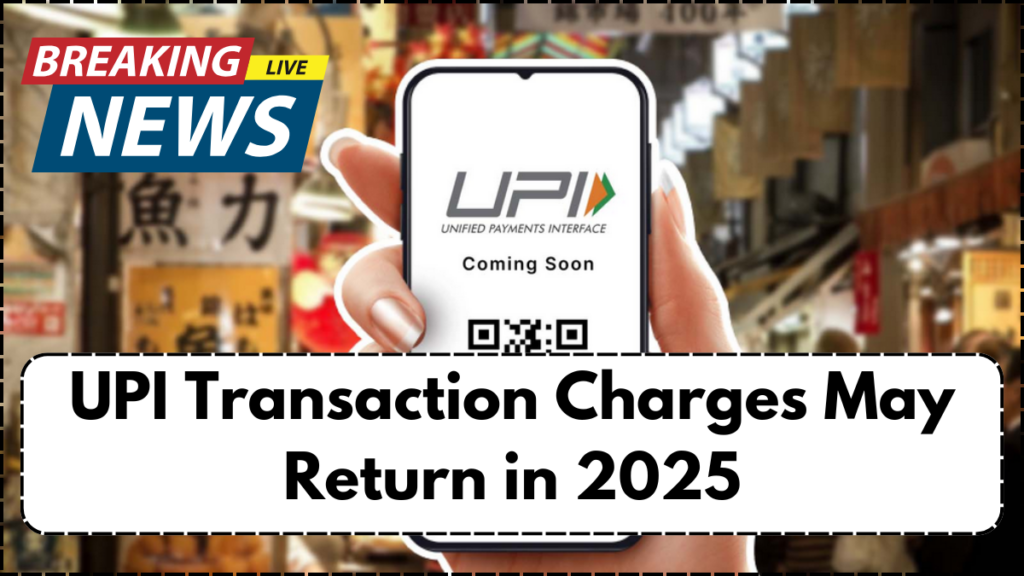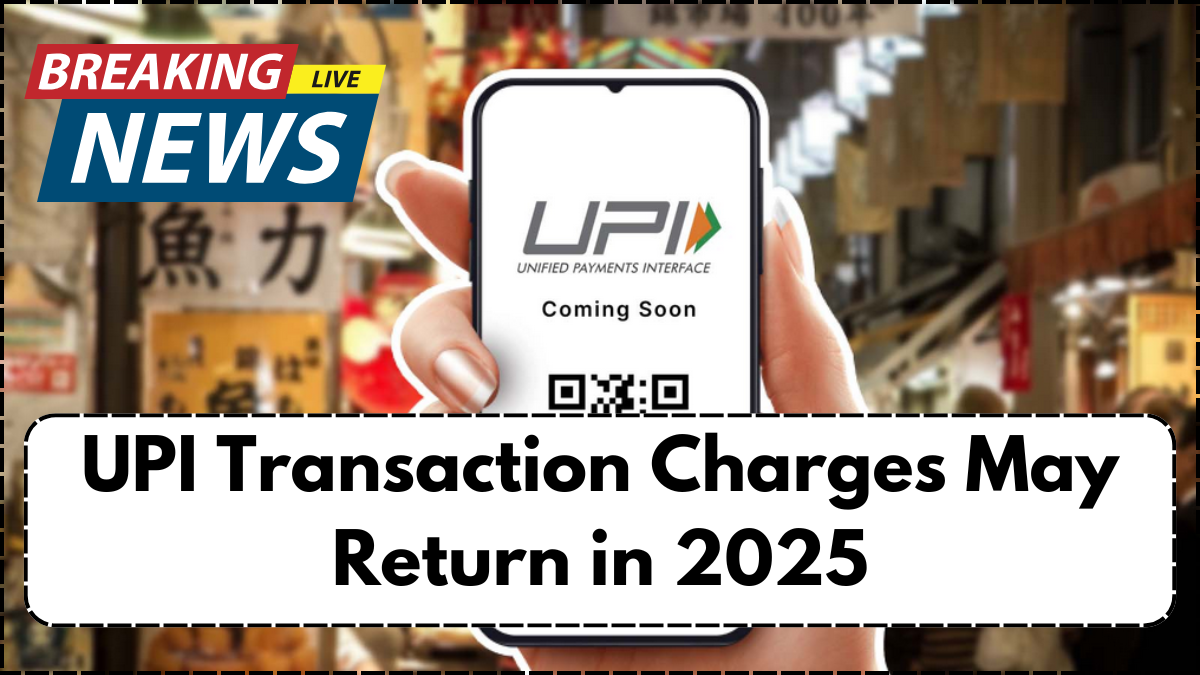For several years, the Unified Payments Interface (UPI) has led India’s digital payment revolution, praised for its speed, safety, and most notably, its zero-cost structure. From street vendors to high-end retail stores, UPI made digital transactions universally accessible and convenient. However, as of April 2025, this cost-free convenience may be nearing its end.
The Payments Council of India (PCI) has suggested reintroducing the Merchant Discount Rate (MDR) on UPI and RuPay transactions. This recommendation comes amid a decline in government subsidies that have traditionally helped cover the operating costs of payment service providers. If approved by policymakers, this change could lead to major shifts in India’s digital payment landscape, especially influencing the way merchants and consumers interact with digital payment systems.

Why Is UPI No Longer Free?
Prior to January 2020, UPI transactions incurred a minimal MDR fee, typically less than 1%. This helped payment providers offset costs for infrastructure maintenance, security, and customer support. However, in December 2019, to promote digital adoption, the Ministry of Finance eliminated MDR on UPI and RuPay debit card transactions.
To compensate for the revenue loss, the government offered financial subsidies. These have now been reduced from ₹3,500 crore in FY24 to just ₹1,500 crore in FY25. Industry estimates suggest that it costs approximately ₹10,000 crore annually to run and maintain the UPI ecosystem, exposing a massive funding deficit.
What Is MDR and Why Does It Matter?
MDR, or Merchant Discount Rate, is a service fee charged to merchants by banks or payment service providers when digital payments are accepted. These fees support critical backend operations, such as cybersecurity, anti-fraud systems, dispute resolution, and continuous technological upgrades.
Here is a comparative overview of MDR across different payment methods:
| Payment Method | MDR Rate Before Jan 2020 | Current MDR Rate (April 2025) |
|---|---|---|
| Credit Cards | 1% – 3% | 1% – 3% |
| Debit Cards | 0.5% – 1% | 0.5% – 1% |
| UPI Transactions | <1% | 0% |
| RuPay Debit Cards | <1% | 0% |
Why the Industry Supports the Return of MDR
The renewed advocacy for MDR on UPI is grounded in three major concerns:
- Declining Government Subsidies: With the steep reduction in financial support, service providers are under pressure to find alternative revenue models.
- Sustainability of Infrastructure: Managing a real-time, secure payment system at scale demands continuous investment in servers, AI-based fraud prevention, merchant onboarding, and customer service.
- Equitable Business Model: Credit and debit card transactions yield MDR income. UPI, offering no such incentive, places service providers at a competitive disadvantage. Reintroducing MDR levels the playing field across payment types.
Potential Impacts of MDR Reintroduction
On Merchants
- Increased Costs: Merchants, especially large-scale retailers, may face up to 0.3% charges per UPI transaction.
- Price Adjustments: Some may factor this fee into product pricing, leading to slight cost increases for consumers.
- Shift to Cash: Smaller businesses could revert to cash-based transactions to avoid additional fees.
On Consumers
- No Direct Charges: Consumers won’t be charged directly, but they may feel the effect through higher retail prices.
- Digital Payment Disincentives: Limited UPI acceptance in certain retail segments may reintroduce friction in everyday transactions.
On Payment Providers
- Revenue Stream: MDR will offer a sustainable revenue line to maintain and expand digital infrastructure.
- Service Enhancements: Additional funds could be invested in user interface improvements, fraud detection, and customer support.
Key Motivators for Reinstating UPI MDR
- Diminishing financial subsidies
- Rising costs of cybersecurity and maintenance
- Lack of parity with other digital payment systems
- Need for sustainable growth models
Looking Ahead: What to Expect in 2025
The government is currently reviewing the PCI’s proposal. If approved, the MDR model could roll out for large merchants within the second half of 2025. Small and micro businesses might remain exempt to avoid hindering digital adoption in rural and underserved markets.
Stakeholders across the ecosystem—from startups to major banks—are now watching closely. A change in MDR policy could redefine how digital commerce operates in the country. For consumers, awareness of evolving pricing dynamics will be essential.
Conclusion
India’s UPI framework has long stood as a global model of accessible, zero-cost digital payments. However, as we move deeper into 2025, evolving economic conditions demand a reassessment of how such systems are funded and sustained. The reintroduction of MDR, while potentially disruptive, may be necessary to ensure long-term innovation and reliability within India’s fast-growing digital economy.
FAQs
What is MDR in UPI transactions?
MDR stands for Merchant Discount Rate. It’s a fee paid by merchants to service providers for processing digital payments.
Will consumers be charged for using UPI?
No, consumers will not pay any fees directly. However, merchants may pass on the MDR cost through price increases.
When will the new MDR policy be implemented?
As of April 2025, the proposal is under government review. If accepted, changes may roll out by the latter half of the year.
Will all merchants have to pay MDR?
The proposal suggests that only large merchants will be subject to MDR initially, with possible exemptions for small businesses.
Why is MDR important for service providers?
MDR supports operational costs such as cybersecurity, fraud prevention, customer service, and technology maintenance.
For More Information Click Here
Pari is a passionate writer known for captivating stories that blend imagination and reality. Inspired by travel, history, and everyday moments, Pari crafts narratives that resonate deeply with readers.




